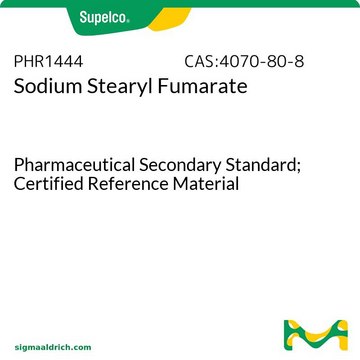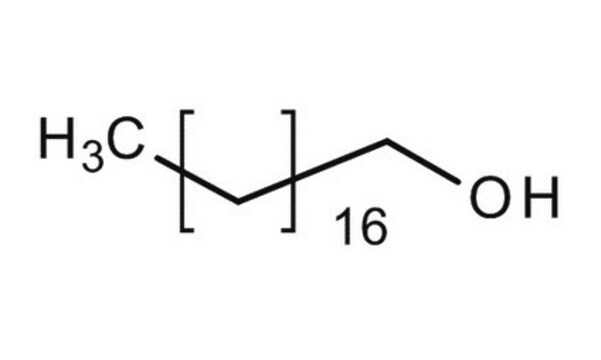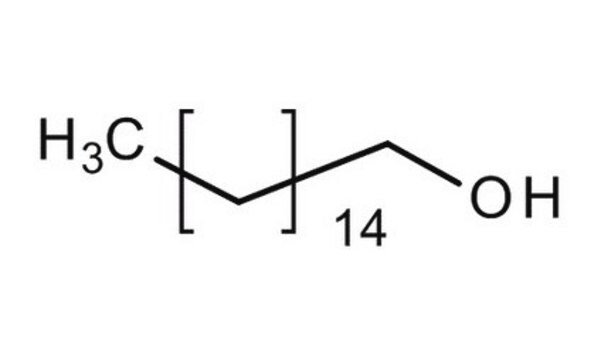1622000
USP
Stearyl alcohol
United States Pharmacopeia (USP) Reference Standard
Sinônimo(s):
1-Octadecanol, Octadecyl alcohol, Stearyl alcohol
About This Item
Produtos recomendados
grau
pharmaceutical primary standard
densidade de vapor
9.3 (vs air)
pressão de vapor
<0.01 mmHg ( 38 °C)
família API
stearyl alcohol
temperatura de autoignição
842 °F
Lim. expl.
~8 %
fabricante/nome comercial
USP
pf
56-59 °C (lit.)
densidade
0.812 g/mL at 25 °C (lit.)
aplicação(ões)
pharmaceutical (small molecule)
Formato
neat
cadeia de caracteres SMILES
CCCCCCCCCCCCCCCCCCO
InChI
1S/C18H38O/c1-2-3-4-5-6-7-8-9-10-11-12-13-14-15-16-17-18-19/h19H,2-18H2,1H3
chave InChI
GLDOVTGHNKAZLK-UHFFFAOYSA-N
Procurando produtos similares? Visita Guia de comparação de produtos
Descrição geral
Aplicação
- Cetostearyl Alcohol
- Sodium Stearyl Fumarate
- Hydrogenated Lanolin
- Cetyl Alcohol
- Myristyl Alcohol
- Oleyl Alcohol
Nota de análise
Outras notas
produto relacionado
Código de classe de armazenamento
11 - Combustible Solids
Classe de risco de água (WGK)
nwg
Ponto de fulgor (°F)
383.0 °F - closed cup
Ponto de fulgor (°C)
195 °C - closed cup
Escolha uma das versões mais recentes:
Certificados de análise (COA)
It looks like we've run into a problem, but you can still download Certificates of Analysis from our Documentos section.
Se precisar de ajuda, entre em contato Atendimento ao cliente
Já possui este produto?
Encontre a documentação dos produtos que você adquiriu recentemente na biblioteca de documentos.
Os clientes também visualizaram
Nossa equipe de cientistas tem experiência em todas as áreas de pesquisa, incluindo Life Sciences, ciência de materiais, síntese química, cromatografia, química analítica e muitas outras.
Entre em contato com a assistência técnica







